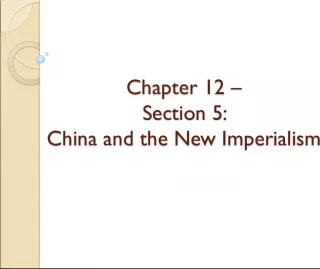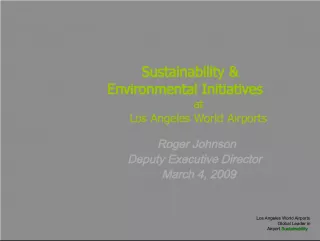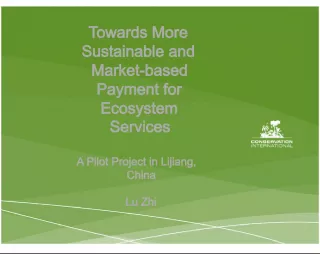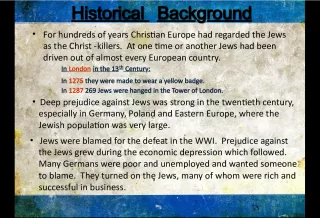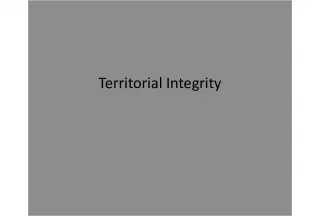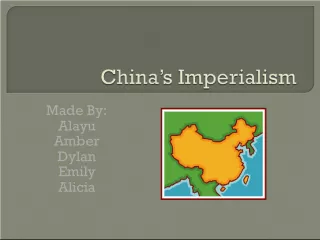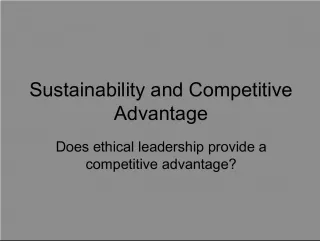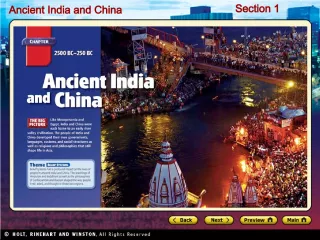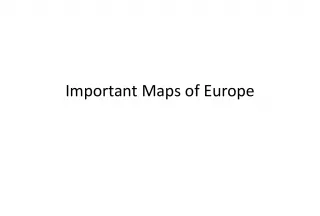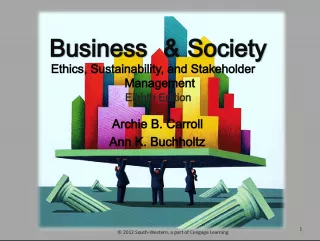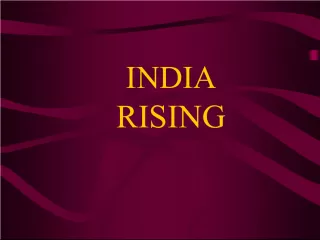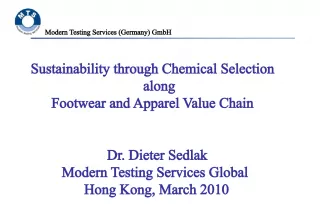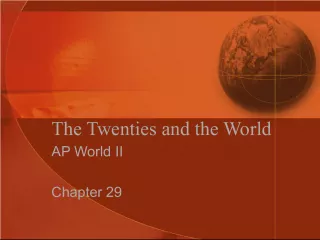Growth, Sustainability, and Fairness: A Comparison of China, Europe, and the US
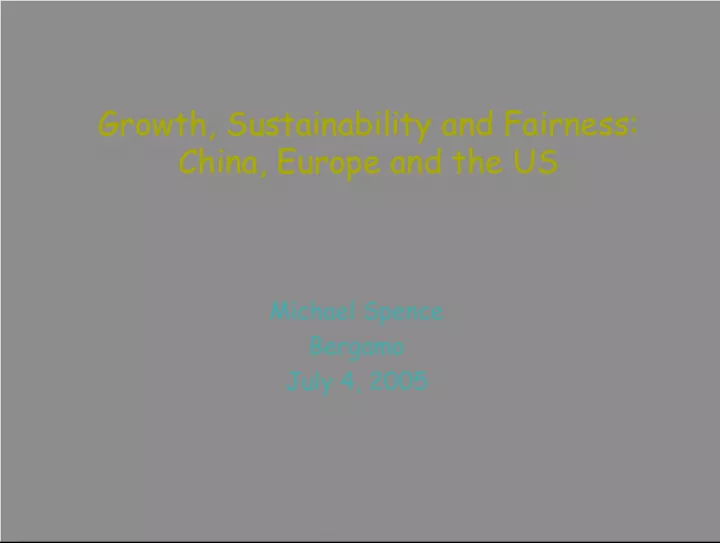

This article provides a comparison of the growth, sustainability, and fairness trends of China, Europe, and the US. It analyzes data from different countries and identifies patterns and trends in GDP growth, energy consumption, and other factors.
- Uploaded on | 1 Views
-
 carterlowe
carterlowe
About Growth, Sustainability, and Fairness: A Comparison of China, Europe, and the US
PowerPoint presentation about 'Growth, Sustainability, and Fairness: A Comparison of China, Europe, and the US'. This presentation describes the topic on This article provides a comparison of the growth, sustainability, and fairness trends of China, Europe, and the US. It analyzes data from different countries and identifies patterns and trends in GDP growth, energy consumption, and other factors.. The key topics included in this slideshow are Growth, Sustainability, Fairness, China, Europe, US,. Download this presentation absolutely free.
Presentation Transcript
1. Growth, Sustainability and Fairness: China, Europe and the US Michael Spence Bergamo July 4, 2005
2. 2 A Little Data
3. 3
4. 4
5. 5 China
6. 6
7. 7 Source: Energy Information Administration (GDP in billions of 1995 US$) 1980 1988 2001 80-01 % World China 9.5 164 368 1,114 6.8 3.0 India 5.5 161 253 506 3.1 1.5 Korea 7.2 149 295 639 4.3 1.9 Taiwan 6.7 85 160 333 3.9 1.0 Russia n/a n/a 367 - 1.1 Brazil 489 580 772 1.6 2.3 Mexico 220 243 372 1.7 1.1 Argentina 220 214 280 1.3 0.8 South Africa 127 141 176 1.4 0.5 Japan 2.6 3,298 4,496 5,651 1.7 16.5 Emerging Markets 2,389 3,158 6,112 2.6 17.9 World 4.6 18,662 23,898 34,187 1.8 Growth Multiple
8. 8 Relative Growth rates for China and India GDP per capita growth PPP adjusted*, $ per person China India Source: World Development Indicators, The World Bank
9. 9
10. 10
11. 11 The Portfolio of Economic Activity or Industrial Mix Evolves over time Quite rapidly at these growth rates Japan, Taiwan and Korea are examples The global economy creates more opportunities for economic activity to move around Education is the key to accomplishing the implied shifts in types of jobs and employment Social policy: US and Europe Implementing social insurance at the industry or company level is unwise Europe and China
12. 12 Network Based Information Technology Its impacts are evolving rapidly Impacts are in three classes (more or less in historical order) and all in relatively early stages of a lengthy evolution All fit the general description of lowering transactions costs, but in different areas The headings are 1. Automation of information processing functions 2. Lowering the cost of finding things 3. Making remote HR resources much more accessible and therefore valuable in supply chains
13. 13 Automation of Information processing, monitoring, accounting, control and reporting Labor saving technical change Source of much of the US productivity growth spurt and it is in process in other advanced countries with a lag. The network is critical because it connects disparate databases and users Evident in macro data and at the micro level of the firm
14. 14 CUSTOMERS/MARKETS SALES SERVICE FINANCE AND ACCOUNTING HR PURCHASING MANUFACTURING SHIPPING/LOGISTICS GLOBAL SUPPLY CHAIN SERVICE PROVIDERS
15. 15 CUSTOMERS/MARKETS SALES SERVICE FINANCE AND ACCOUNTING HR PURCHASING MANUFACTURING SHIPPING/LOGISTICS GLOBAL SUPPLY CHAIN SERVICE PROVIDERS CRM ERP SCM
16. 16 Technological Change in the Information Service Sector and Productivity Increases Why are the effects of technological change in information service sector large It has to do with the input-output structure of advanced economies
17. 17 INPUT OUTPUT STRUCTURE LABOR CAPITAL RAW MATERIALS GOODS AND SERVICES CONSUMED BY HOUSEHOLDS CONSUMED BY BUSINESSES TO ADD TO CAPITAL CONSUMED BY GOVERNMENT TO DELIVER SERVICES AVAILABLE TECHNOLOGY
18. 18 INPUT OUTPUT STRUCTURE 2 LABOR CAPITAL RAW MATERIALS GOODS AND SERVICES CONSUMER BY HOUSEHOLDS CONSUMED BY BUSINESSES TO ADD TO CAPITAL CONSUMED/INVESTED BY GOVERNMENT TO DELIVER SERVICES AVAILABLE TECHNOLOGY GOODS AND SERVICES INFO SERVICES
19. 19 Search and Transacting Costs Making markets buyers and sellers finding each other eBay Quasi natural monopoly Better informed buyers Transacting services banking and financial services Market liquidity and the geographic boundaries of markets more buyers Finding specific valuable human resources Measuring the economic benefits is harder than in the automation case
20. 20 Accessing Geographically Disparate Human Resources Efficiently IT services Business Process Outsourcing R&D In certain kinds of functions, the geographic boundaries of labor markets are breaking down Paul Samuelson article The nature of this kind of technological progress Production functions Transactions costs Comparative Advantage of the Advanced Countries?
21. 21 Governance A variety of governance systems are consistent with rapid growth and integration into the global economy Democracy and autocracy Advantages and disadvantages The implicit objective function of those who hold the power i.e. control the resources or access to them Growth/future generation orientation Inclusive/egalitarian
22. 22 Justifiable Microeconomic Intervention To correct market failures Externalities Informational gaps and asymmetries To prevent the exercise of monopoly power To countervail subsidies or other interventions elsewhere To slow the rate of change to protect people and to give them a chance to adapt To prevent excessive volatility in informationally immature markets Investing to create assets with externalites or public good like characteristics Setting standards and objectives for Foreign Direct Investment
23. 23 Culture and Values Attitudes toward progress, material wealth, risk- taking, action by individuals versus groups Students at our business schools A sense of possibilities
